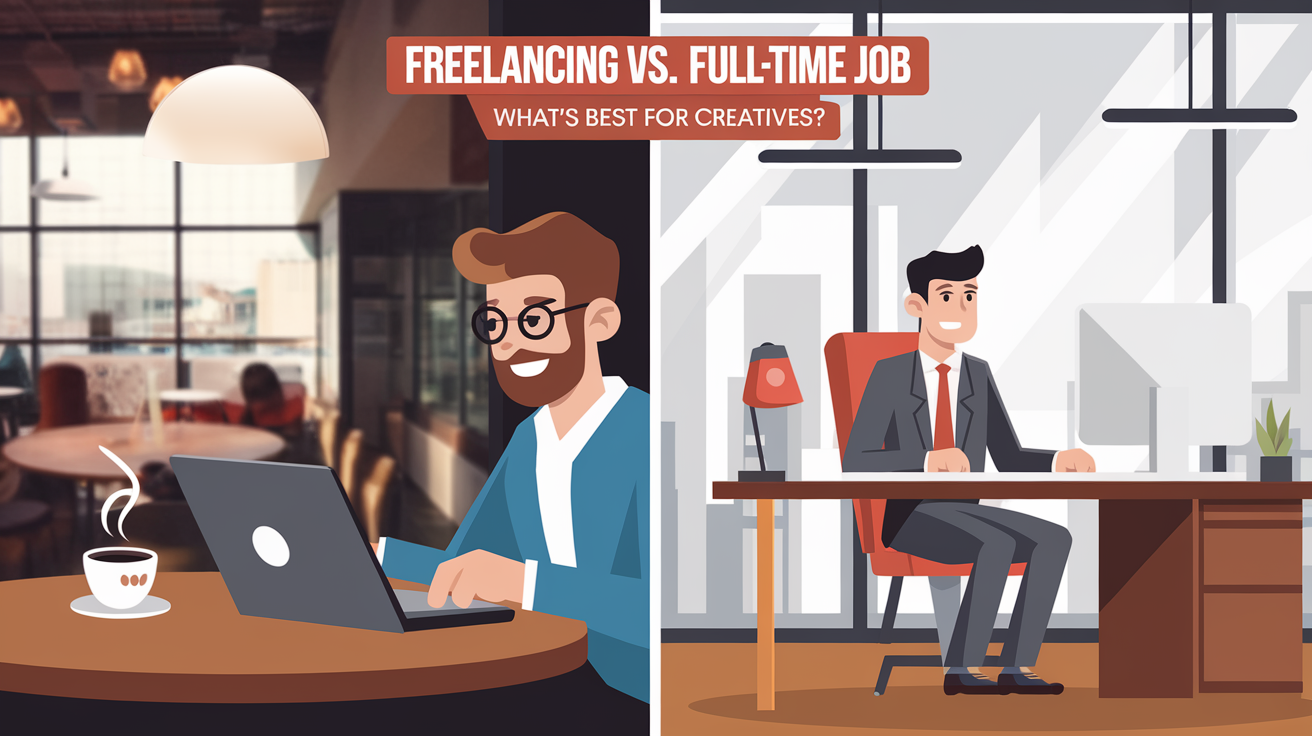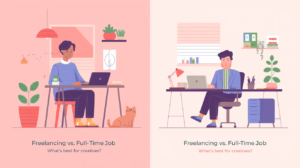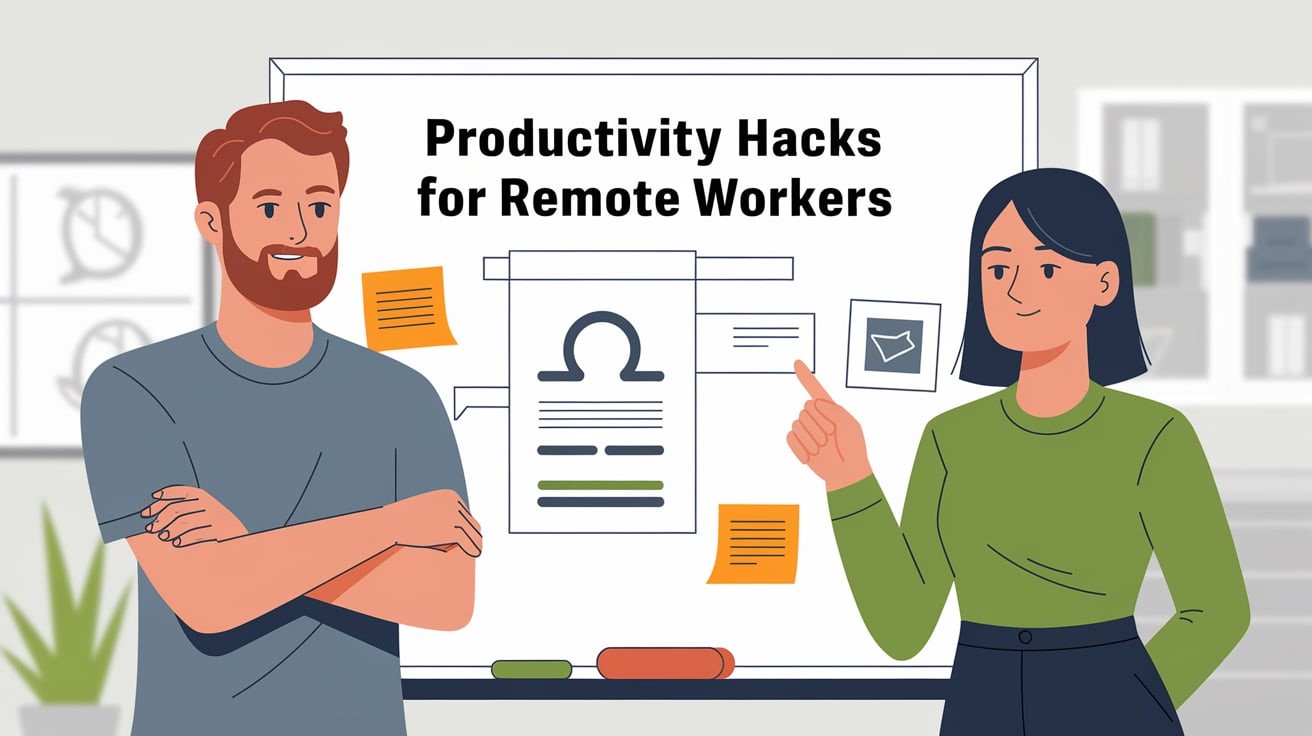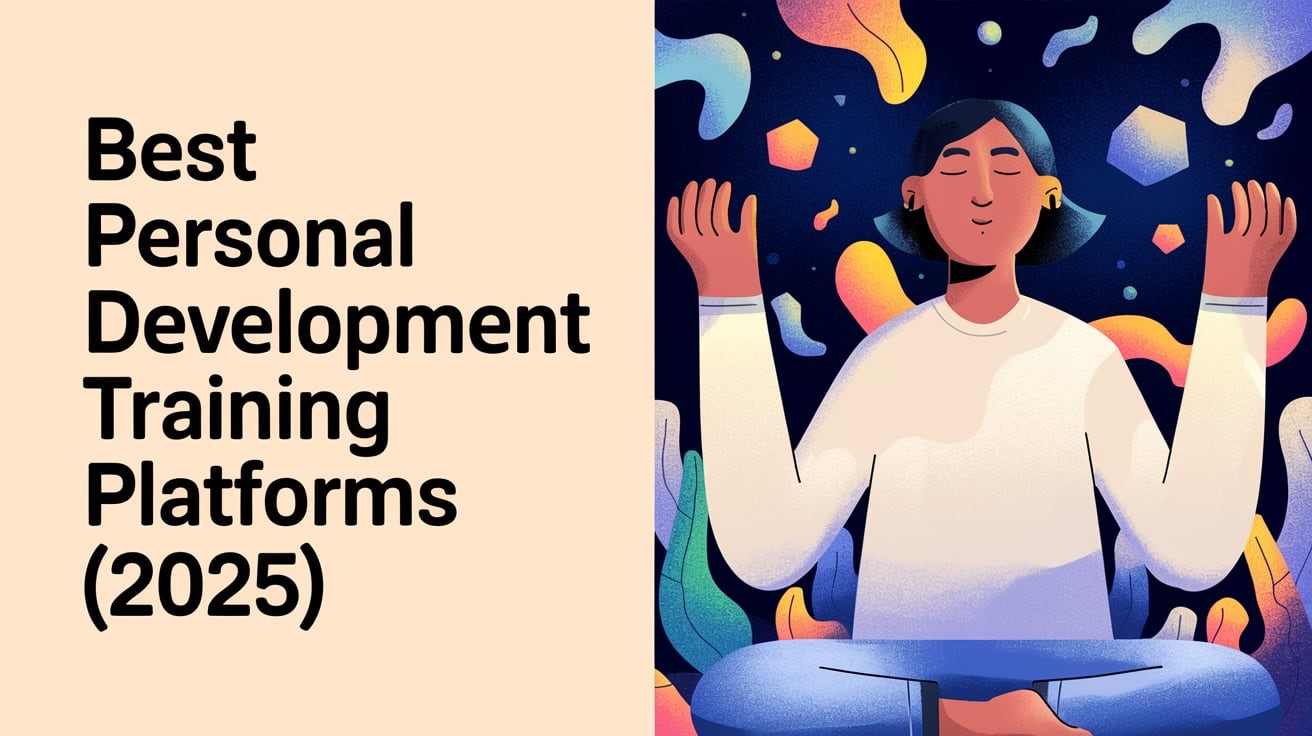Freelancing vs. Full-Time Job: What’s Best for Creatives?
In today’s evolving job market, creatives have more career paths to choose from than ever before. Whether you’re a designer, writer, artist, or marketer, one of the biggest decisions you’ll face is whether to pursue freelancing or a full-time job. Each option comes with its own advantages and drawbacks. In this article, we’ll break down the key differences to help you decide what’s best for your career and lifestyle while also exploring the best places to find work opportunities.
Here’s a comparison chart for Freelancing vs. Full-Time Job:
The Pros and Cons of Freelancing
Freelancing has become an increasingly popular choice for creatives who crave flexibility and independence. However, it also comes with challenges that may not suit everyone.
Pros of Freelancing
- Flexibility: One of the biggest perks of freelancing is the ability to set your own schedule. You choose when and where to work, which can lead to a better work-life balance.
- Diverse Projects: Freelancers often work on a variety of projects, which keeps things exciting and helps expand their skills.
- Higher Earning Potential: Unlike salaried employees, freelancers can set their own rates and take on multiple clients, increasing their income potential.
- Creative Freedom: Freelancers have more control over the projects they take on, allowing them to focus on work that aligns with their interests and values.
Cons of Freelancing
- Income Instability: Unlike a full-time job, freelancing does not guarantee a steady paycheck, which can lead to financial uncertainty.
- No Employee Benefits: Freelancers must cover their own health insurance, retirement savings, and other benefits typically provided by employers.
- Self-Marketing Required: Finding clients and maintaining a steady flow of work requires strong marketing and networking skills.
- Isolation: Working independently can be lonely, especially for those who thrive in team environments.
The Pros and Cons of a Full-Time Job
A traditional full-time job offers stability and structure, making it an attractive option for many creatives. However, it may come with certain limitations.
Pros of a Full-Time Job
- Steady Income: A full-time job provides a consistent paycheck, making it easier to manage finances.
- Employee Benefits: Health insurance, paid time off, retirement plans, and other perks make full-time employment financially appealing.
- Career Growth Opportunities: Working within a company can lead to promotions, mentorship, and professional development.
- Collaboration and Networking: Being part of a team fosters creativity and opens up networking opportunities that can benefit long-term career growth.
Cons of a Full-Time Job
- Limited Flexibility: Fixed work hours and office requirements can make it challenging to maintain a flexible work-life balance.
- Less Creative Freedom: Employees may have to work on projects assigned by their employer, even if they don’t align with their passions.
- Salary Ceiling: Unlike freelancers who can increase their rates, salaried employees often have a fixed income with annual raises that may not match their desired earnings.
- Office Politics: Working in a corporate environment may come with challenges such as office politics, bureaucracy, and rigid hierarchies.
Freelancing vs. Full-Time Job comparison chart
| Aspect | Freelancing | Full-Time Job |
|---|---|---|
| Job Security | Unstable, income fluctuates | Stable, fixed monthly salary |
| Work Hours | Flexible, set your own schedule | Fixed, typically 9-to-5 |
| Income Potential | Unlimited, based on projects & clients | Fixed salary with occasional raises |
| Benefits | No benefits, must arrange own insurance, retirement, etc. | Employer provides health insurance, paid leave, retirement plans |
| Workload Control | Choose projects & clients | Assigned tasks by employer |
| Career Growth | Must seek own opportunities & skills development | Structured promotions & training |
| Independence | Be your own boss, full control over work | Report to managers/supervisors |
| Work Environment | Remote or co-working spaces | Office setting, sometimes hybrid/remote |
| Job Stability | Unpredictable, dependent on client demand | More stable, long-term employment |
| Tax Handling | Must manage & pay self-employment taxes | Taxes are deducted automatically |
Best Places to Find Work Opportunities
Whether you choose freelancing or full-time employment, finding the right job opportunities is essential. Here are some of the best platforms and methods to secure work:
Freelancing Platforms
- Upwork: A leading platform connecting freelancers with clients across various industries.
- Fiverr: Ideal for offering creative services with set pricing.
- Toptal: Best for experienced freelancers looking for high-paying clients.
- PeoplePerHour: Offers projects for designers, writers, and other creatives.
- Freelancer: Another well-known platform where you can bid on projects.
Job Boards for Full-Time Work
- LinkedIn Jobs: A great place to find full-time creative roles and network with industry professionals.
- Indeed: One of the largest job search engines with thousands of listings.
- Glassdoor: Provides insights into company culture along with job postings.
- We Work Remotely: Specializes in remote full-time and freelance positions.
- AngelList: Best for creatives interested in startups and innovative companies.
Which Option is Best for You?
Choosing between freelancing and a full-time job depends on your personality, financial goals, and work preferences. Consider the following:
- If you value stability, benefits, and structured career growth, a full-time job may be the better option.
- If you prefer flexibility, creative freedom, and the potential for higher earnings, freelancing could be your ideal path.
- Some professionals choose a hybrid approach, working a full-time job while freelancing on the side to gain the best of both worlds.
Final Thoughts
Both freelancing and full-time jobs offer unique opportunities and challenges for creatives. Ultimately, the best choice depends on your individual goals and lifestyle preferences. By weighing the pros and cons carefully, you can make a decision that aligns with your career aspirations and personal needs.
Looking for more career tips? Stay tuned to our blog for expert insights on navigating the creative industry! Don’t forget to explore the job platforms mentioned above to find your next opportunity.





